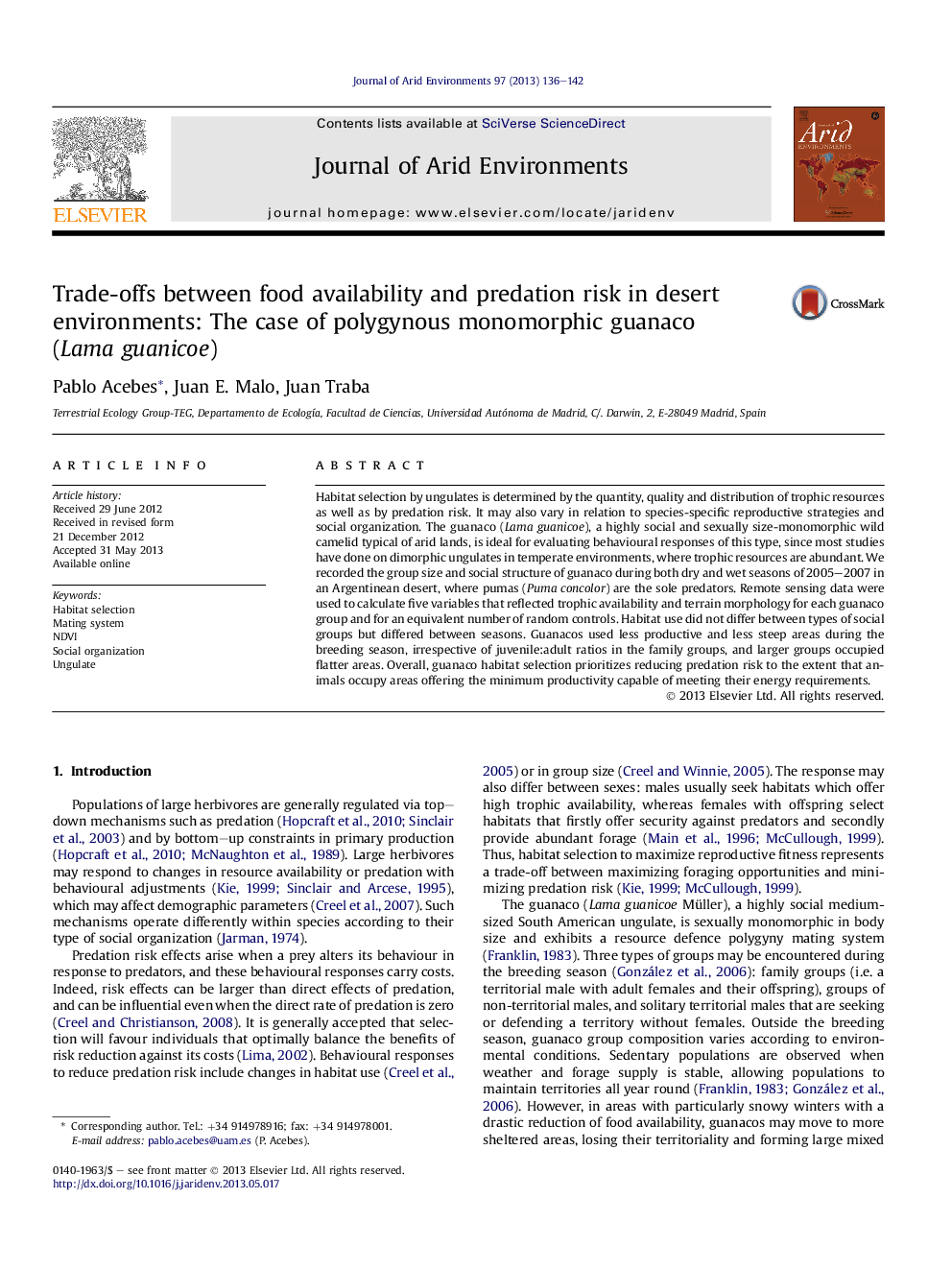| کد مقاله | کد نشریه | سال انتشار | مقاله انگلیسی | نسخه تمام متن |
|---|---|---|---|---|
| 6303551 | 1618260 | 2013 | 7 صفحه PDF | دانلود رایگان |
عنوان انگلیسی مقاله ISI
Trade-offs between food availability and predation risk in desert environments: The case of polygynous monomorphic guanaco (Lama guanicoe)
دانلود مقاله + سفارش ترجمه
دانلود مقاله ISI انگلیسی
رایگان برای ایرانیان
کلمات کلیدی
موضوعات مرتبط
مهندسی و علوم پایه
علوم زمین و سیارات
فرآیندهای سطح زمین
پیش نمایش صفحه اول مقاله

چکیده انگلیسی
Habitat selection by ungulates is determined by the quantity, quality and distribution of trophic resources as well as by predation risk. It may also vary in relation to species-specific reproductive strategies and social organization. The guanaco (Lama guanicoe), a highly social and sexually size-monomorphic wild camelid typical of arid lands, is ideal for evaluating behavioural responses of this type, since most studies have done on dimorphic ungulates in temperate environments, where trophic resources are abundant. We recorded the group size and social structure of guanaco during both dry and wet seasons of 2005-2007 in an Argentinean desert, where pumas (Puma concolor) are the sole predators. Remote sensing data were used to calculate five variables that reflected trophic availability and terrain morphology for each guanaco group and for an equivalent number of random controls. Habitat use did not differ between types of social groups but differed between seasons. Guanacos used less productive and less steep areas during the breeding season, irrespective of juvenile:adult ratios in the family groups, and larger groups occupied flatter areas. Overall, guanaco habitat selection prioritizes reducing predation risk to the extent that animals occupy areas offering the minimum productivity capable of meeting their energy requirements.
ناشر
Database: Elsevier - ScienceDirect (ساینس دایرکت)
Journal: Journal of Arid Environments - Volume 97, October 2013, Pages 136-142
Journal: Journal of Arid Environments - Volume 97, October 2013, Pages 136-142
نویسندگان
Pablo Acebes, Juan E. Malo, Juan Traba,